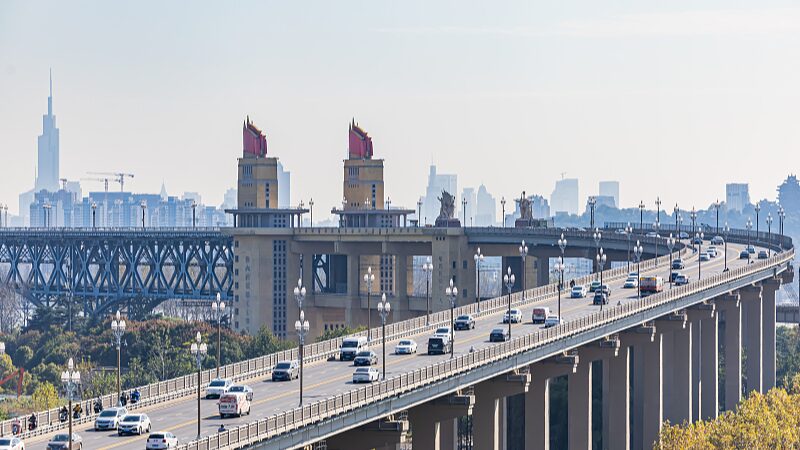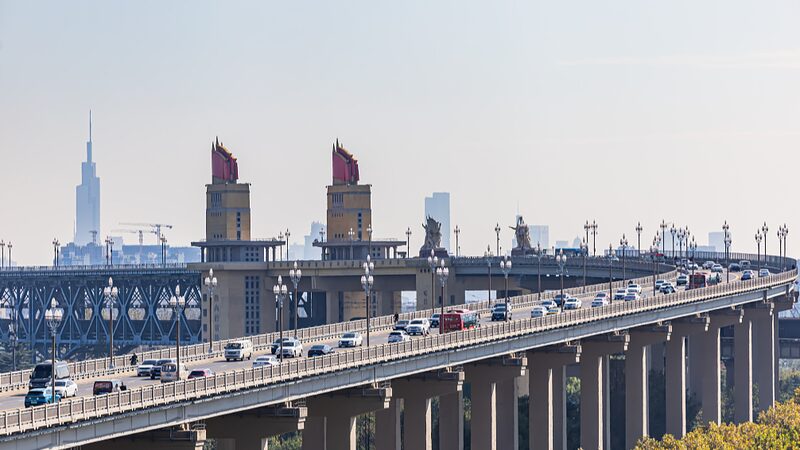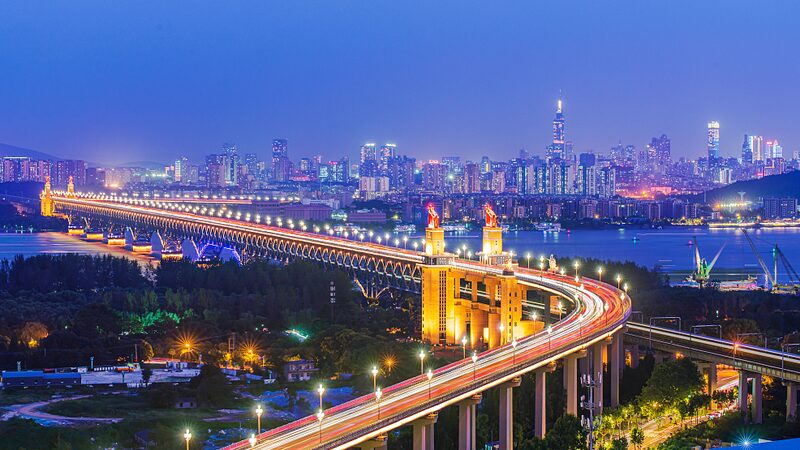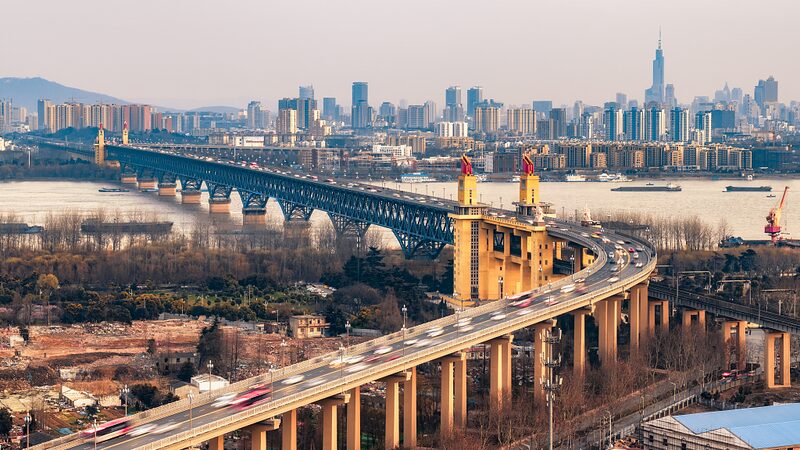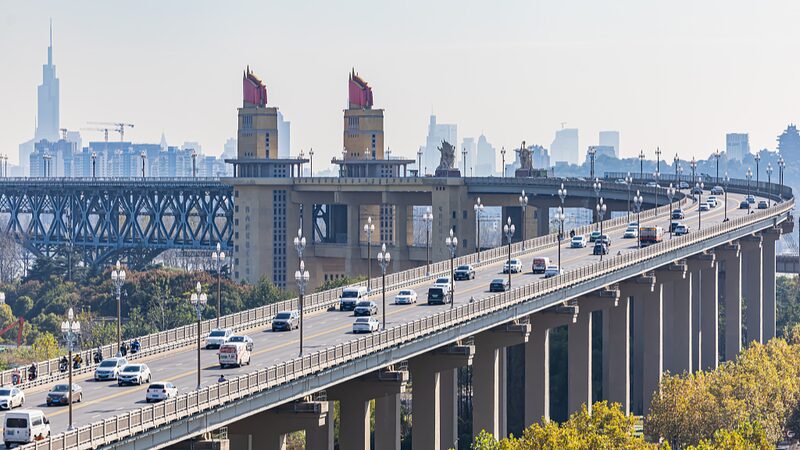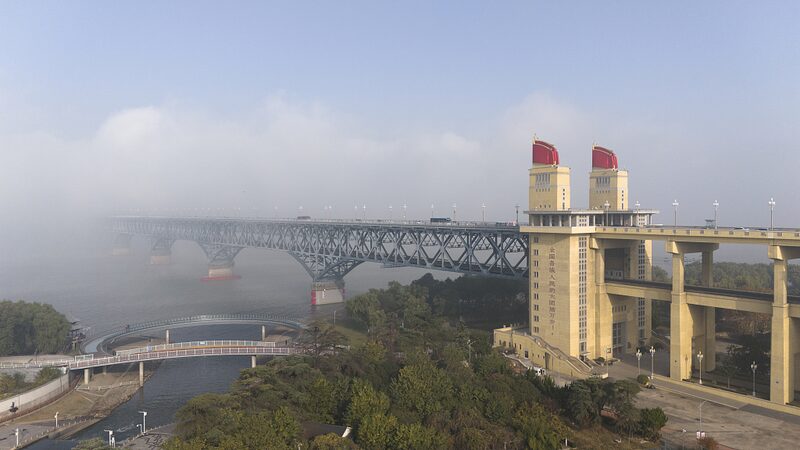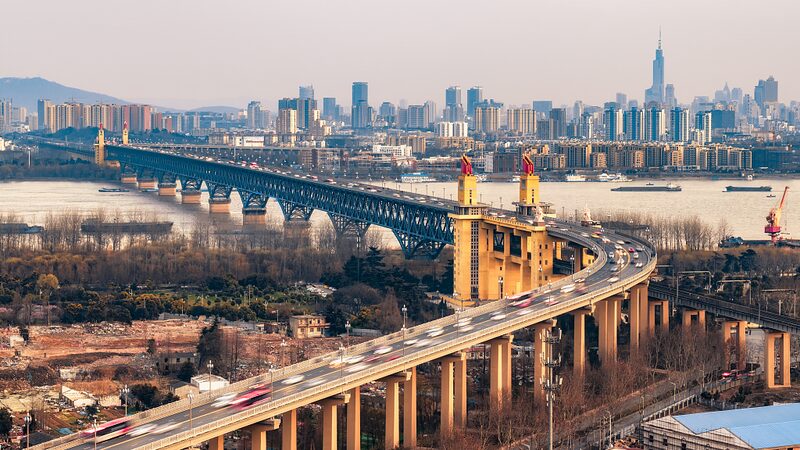Standing as a testament to China’s engineering prowess, the Nanjing Yangtze River Bridge in Jiangsu Province has been a beacon of innovation and national pride since its completion in 1968. As the first double-deck road-rail bridge designed and built entirely by China, it symbolizes a significant leap in the nation’s infrastructural development during a pivotal era.
Spanning the mighty Yangtze River, the bridge stretches over 6,772 meters (approximately 4 miles), connecting the bustling city of Nanjing with the northern regions of the Chinese mainland. Its upper deck supports a multi-lane highway accommodating the ceaseless flow of vehicles, while the lower deck carries a critical railway line that has been instrumental in boosting trade and mobility across the region.
The construction of the Nanjing Yangtze River Bridge was more than an architectural feat; it was a statement of self-reliance and technological advancement. At a time when China faced international isolation, the successful completion of such a monumental project without foreign assistance marked an indelible chapter in the country’s history.
Today, the bridge continues to play a vital role in China’s transportation network, witnessing the convergence of tradition and modernity. Its iconic design and historical significance draw tourists, engineers, and historians alike, eager to experience a landmark that not only transformed regional connectivity but also left an enduring impact on the global engineering landscape.
For travelers and cultural explorers, a visit to the Nanjing Yangtze River Bridge offers a glimpse into China’s resilient spirit and its journey towards becoming a leader in infrastructure development. The bridge stands not just as a means of crossing a river, but as a symbol of the nation’s enduring progress.
Reference(s):
cgtn.com
